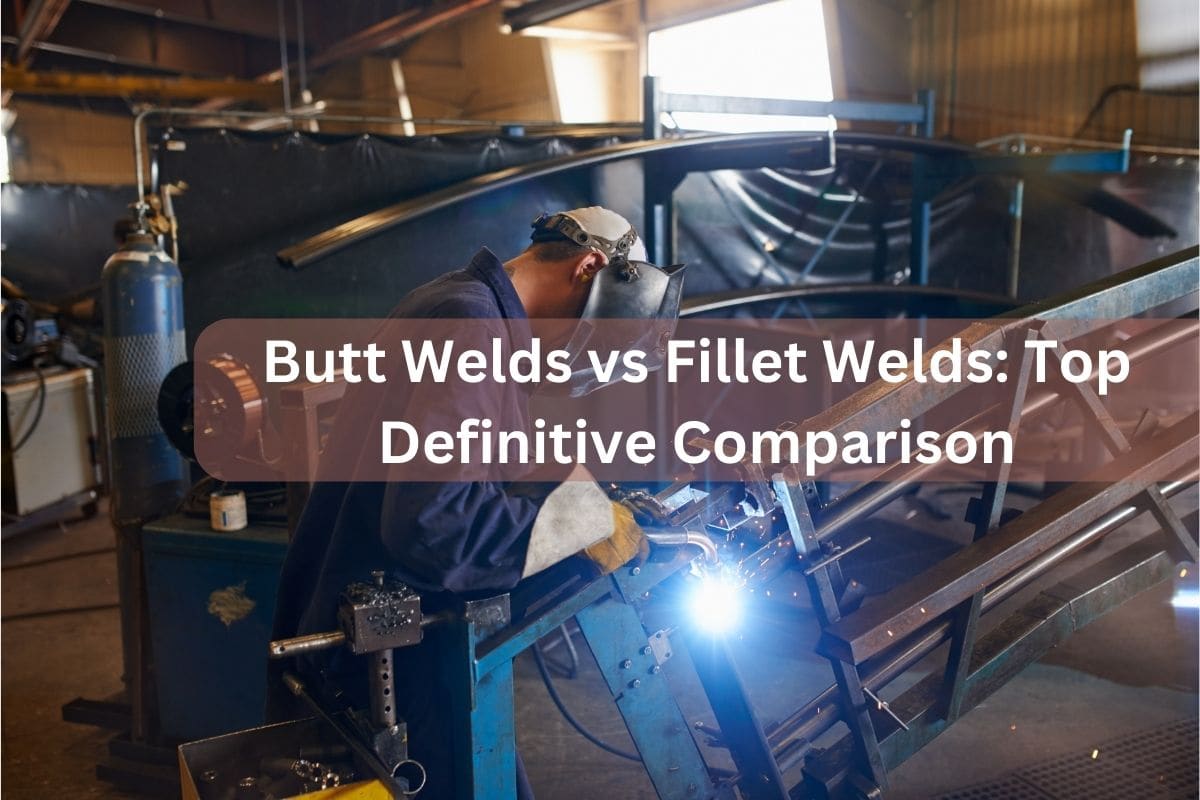When discussing butt welds vs fillet welds, it’s essential to recognize that while they may appear similar to those just starting in the welding field, their construction methods and applications vary.
This article will delve into the intricacies of both types, helping you understand their fundamental differences, advantages, and disadvantages.
Basics of Butt Welds
Butt welds involve joining two pieces of metal lying in the same plane. Picture two metal pieces nearly touching with a tiny gap – typically around 1/8” (3mm).
This gap plays a crucial role. If it’s too small, the weld may not penetrate well. If it’s too wide, the result can be an unsightly, hefty seam.
Now, the welder creates a molten metal pool and moves it along this joint, adding filler material. When dealing with thicker pieces, they often chamfer the edges to ensure deep penetration.
If you’re arc welding pieces of different thicknesses in the same plane, you’re essentially crafting a lap joint. This is more of a fillet weld rather than a butt weld.
Read Also : Detailed Guide to Butt Joint Welding: Types, Pros and Cons
Understanding Fillet Welds
Fillet welds are a bit like the multitaskers of the welding world. Their adaptability and ease make them a common choice, but there’s more to them than meets the eye.
- No Edge Prep: One of the standout attributes of fillet welds is that they typically require no edge preparation. This means you can jump straight into the welding process, saving both time and resources.
- Distinct Shape: If you’ve seen a fillet weld, its triangular cross-section is hard to miss. This shape not only gives it its distinct appearance but is also a testament to its strength. The 45° angle to both parent materials ensures an even distribution of stress across the weld.
- Versatility in Profiles: Fillet welds come in different face profiles, from miter to convex and even concave. This allows for flexibility in design and application based on the specific requirements of the job at hand.
Remember, while fillet welds offer ease and adaptability, it’s always crucial to ensure the weld’s throat, the most slender section, aligns with the thickness of the base metal. This ensures optimal strength and longevity for the joint.
Read Also : What is a Fillet Weld? Impressive Details You Need
Butt Welds vs Fillet Welds: Which One to Choose?
When it comes to welding, understanding the differences between butt welds and fillet welds is pivotal.
But beyond knowing the basics, how do you determine which one is right for your project? Let’s break it down:
- Assess the Material Thickness:
- Butt Welds: These are particularly suited for joining pieces of similar thickness. If your project involves thick materials, butt welds are often the go-to, especially when full penetration and strength across the joint are crucial.
- Fillet Welds: While they can be used with thicker materials, fillet welds shine in applications where the pieces have varying thicknesses or when dealing with T joint and lap joint.
- Consider the Application’s Stress and Load:
- Butt Welds: If your project will bear significant load or stress, a butt weld might be the better choice. Its inherent strength, especially in full penetration welds, ensures the joint can handle substantial loads.
- Fillet Welds: While strong in their own right, they might not be the top pick for heavy-duty applications. However, they’re excellent for projects where the primary stress is shear.
- Time and Cost:
- Butt Welds: They often require more prep time, especially with thicker materials. This can translate to higher costs due to the increased labor and material consumption.
- Fillet Welds: With minimal to no edge preparation needed, fillet welds can be quicker and more cost-effective, especially for smaller projects or those on a tight deadline.
- Skill and Equipment:
- Butt Welds: These demand a higher skill set. The welder needs to ensure perfect alignment and adequate penetration. The equipment, especially for thicker materials, can be more specialized.
- Fillet Welds: They are more forgiving, making them suitable for those who might not have advanced welding skills. The equipment required is often more basic.
- Final Appearance:
- Butt Welds: When executed correctly, they offer a clean, seamless appearance, making them a top choice for projects where aesthetics are key.
- Fillet Welds: While they too can look neat, the triangular cross-section is more visible, which might or might not align with your project’s aesthetic goals.
Read Also : Groove Weld vs Fillet Weld: Which is Right for Success Weld?
Conclusion
To sum it up, both butt welds and fillet welds have their unique strengths and applications.
Your choice will largely depend on the specific requirements of your project, your skill level, and the tools at your disposal. It’s always about matching the right technique to the task at hand for optimal results.
What’s essential is understanding the nuances, practicing diligently, and choosing wisely based on your project’s requirements. Remember, the welding journey is filled with both challenges and rewards. Stay curious, keep honing your skills, and never give up. Happy welding!


